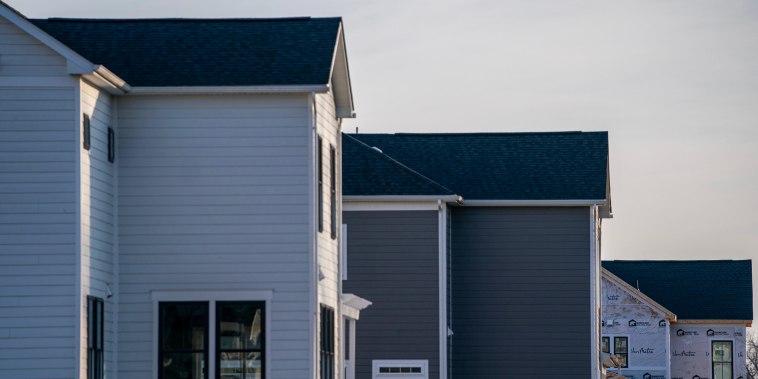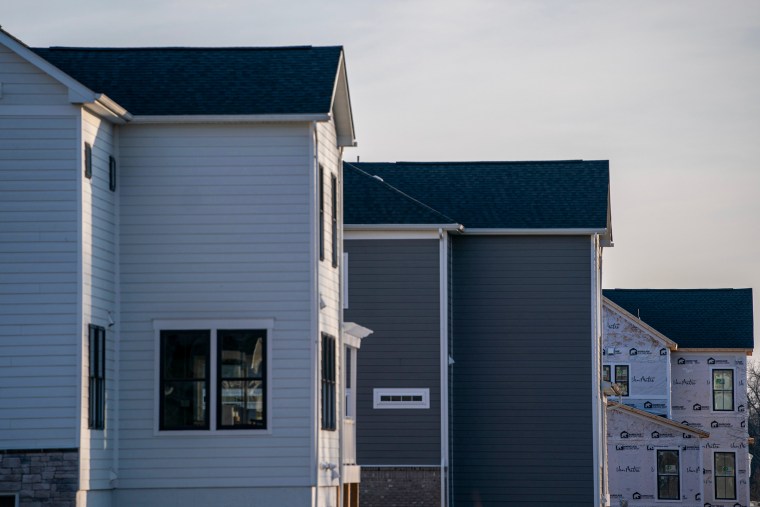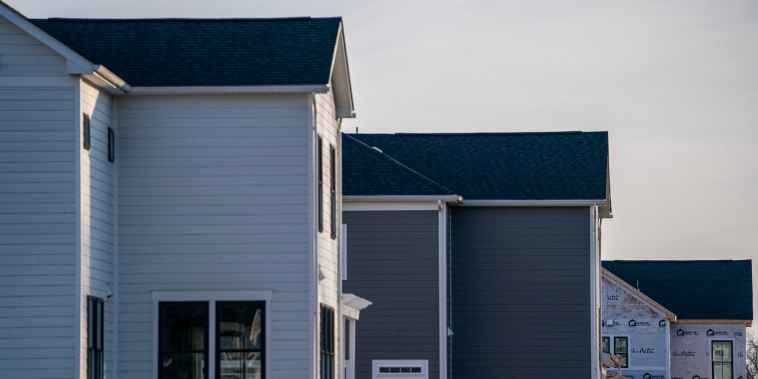
Mortgage rates are high and housing inventory is tight, but some experts see the market’s deep freeze starting to thaw this spring.
Homebuying started to pick up during and after the holidays. Existing home sales increased 3.1% from December to January, according to the National Association of Realtors. Meanwhile, the inventory of unsold existing homes rose 2% from December to January, totaling around 1 million at the end of last month, slightly expanding buyers’ options.
“While home sales remain sizably lower than a couple of years ago, January’s monthly gain is the start of more supply and demand,” NAR chief economist Lawrence Yun said in a news release Thursday.
“This might be the market’s first steps toward a ‘new normal’– a world where inventory remains rather scarce by pre-pandemic standards, but buyers are not exactly swarming the doorway of every open house like in 2021 and early 2022,” Zillow senior economist Jeff Tucker wrote in a blog post last week.
“More revived supply should help meet the returning demand, and head off the risk of renewed overheating,” he said.

For the last few years, limited housing inventory and low rates have put the housing market on ice. Many homeowners who’d otherwise be eager to sell have hesitated to shake off the so-called golden handcuffs of mortgage rates as low as 2% or 3%.
That’s finally starting to change, experts say — even though rates are now much higher, climbing again past 7% in recent weeks.
“Markets are just kind of recalibrating for the reality that the Fed is not going to cut interest rates right away,” said Greg McBride, Bankrate’s chief financial analyst. For many buyers and sellers alike, it’s beginning to sink in that “we’re not going back to three and four percent mortgage rates” anytime soon, he said.
In many cases, lifestyle factors — like empty-nesters looking to downsize or growing families hunting for more space — are pushing people to move, rather than wait around for sweeter deals.
“It’s a new cycle for real estate,” said Bess Freedman, CEO of Brown Harris Stevens, a real estate agency that operates throughout the East Coast. Already, she said, that shift in mindset has started to put some more “good opportunities out there. The people who are serious about it are getting into the market and taking advantage of it.”
Experts expect buyers to have a bit more leverage this year compared to last. Data from Zillow shows that 1 in 5 home listings saw a price cut in January, and the typical home was on the market for 29 days — longer than during last year’s buying frenzy, but 19 days shorter than the average before the pandemic.
You don’t need to feel pressed into making an offer on the spot.
Bankrate chief financial analyst Greg McBride
“We’ll probably see several years of pretty tepid home price appreciation,” McBride said.
Tucker gave a similar forecast. “Home prices will neither be skyrocketing nor plunging, but hopefully moving on a slow, boring trajectory like they historically have, and a little higher in spring than in winter,” he wrote.
That could benefit those who are still browsing and saving up for a first home, McBride said. “If you get that promotion, you pay off your student loan debt, you really build up your savings, you’re going to be in a position where home prices may not be much different two years from now than they are today. But your financial position is a lot better,” he said.
Buyers should take the time now to improve their credit and get pre-approved for a loan. Freedman also cautions against waiting for lower rates if you can afford to buy. If you happen to find something you love, she said, “you can probably negotiate well and get your financing in place, and you won’t regret it.”
With supply increasing, buyers stand to benefit from a little more time in the process than in years past, when countless buyers were waiving inspections and bidding well over asking prices just to be in the running.
Right now, “you have the ability to do appropriate due diligence. You don’t need to feel pressed into making an offer on the spot, and if you do, that’s a pretty good indicator that maybe you should walk away,” McBride said. “Making the biggest financial decision of your life under duress rarely leads to success.”
Sellers may increasingly find they need to work with an agent who’s tapped into local trends to avoid having their homes sit on the market for a long time, Freedman said.
“If you’re priced right, it’s definitely a seller’s market. If you’re priced too high, you’re just going to sit there,” she said.
If a home you’re trying to sell is languishing but you can’t reduce the asking price, McBride recommends dangling other concessions. “Offering a temporary mortgage rate buy-down for the seller could be the type of incentive that gets a deal,” he said.

